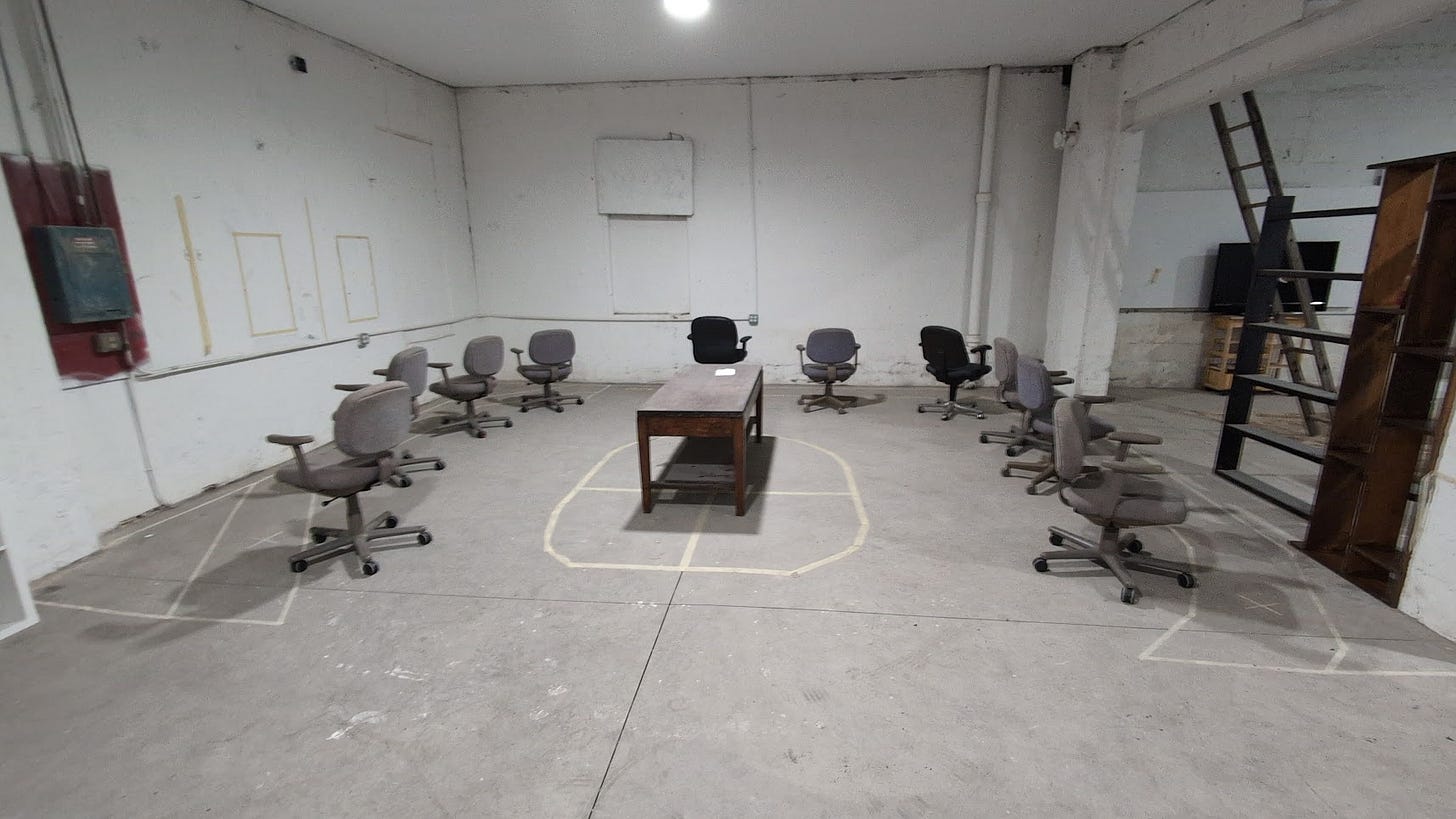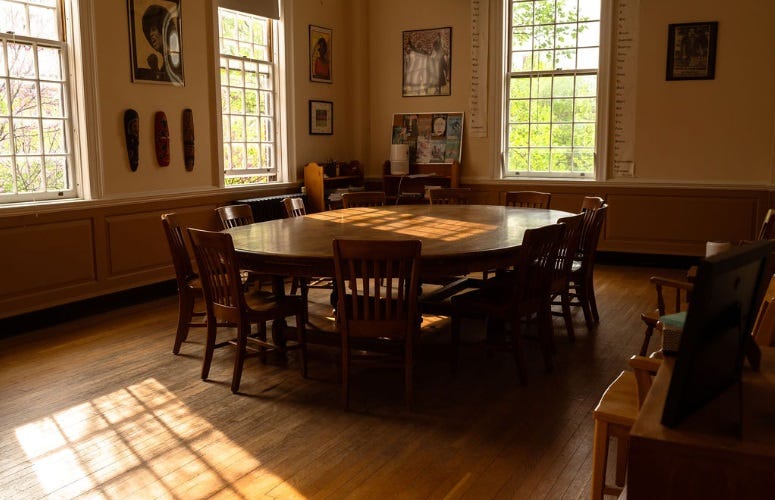Introducing the Pivot Pod™ classroom
Empowering students with technology, while protecting healthy group interaction
At LaunchPoint Academy, we are exploring a new approach to classroom design that we are calling the PIVOT POD™. The idea is simple: instead of traditional rows of desks or even clustered tables, a group of students (up to ten, or so) will be arranged in a circle. Either standing or seated in swiveling chairs, the students will be able to pivot between facing in and facing out.
When facing in, the experience will be one of group interaction and learning. Not having phones or laptops, the students will be encouraged to be fully present with each other. In this mode, an approach similar to that of the “harkness method” (which has been described as “learning through conversation”) will be used.
(The table is optional — we’ll see what feels best in practice.)
When facing out, each student will be able to make use of his or her own fixed digital kiosk. (The kiosks face in, in a configuration reminiscent of Stonehenge.) Connected to the internet and AI, these devices enable the students to perform research, complete online courseware, interact with remote teachers and collaborators, and so on.
A teacher in a PIVOT POD™ classroom is able to call the attention of the class inward (“ok guys, let’s huddle up”), knowing that when the students turn in, away from the kiosks, they will be disconnected from their devices and be able to be attentive to the teacher and to each other. (Supporting this, the teacher is able to freeze all of the devices at the push of a button, just as a flight crew can with in-flight entertainment systems.)
A teacher leading a group of students in this configuration could, for example, call the students inward, prompting them to discuss a topic in which multiple opinions are possible. (ex. “Which of the world’s cuisines is healthiest?”) After some period of discussion, the teacher could then direct the students to gather data to support their position, within a certain period of time. Students would work independently, and then return to the huddle to present and persuade each other with the benefit of their new learnings.
A student working in a PIVOT POD™ who uses online resources to learn, uses AI to generate material (ex. a story or business plan), etc., would have to internalize the content to some degree (possibly using notes) in order to be able to bring it back to the table for presentation to others, to be prepared to respond to teacher questions, etc.
Additional thoughts:
Because the kiosks face in, the teacher is able to see what each student is working on from any point within the circle.
Facing out, one is alone, focused on gathering information. Facing in, one is in community, focused on applying or passing on to others what one has learned (as well as learning from others).
The layout could also support LaunchPoint’s “one-room schoolhouse” model (in which one teacher leads a group of students of varying grade levels and educational objectives), since the format would enable the teacher to call in subsets of the group in turn, giving assignments (individual or group) that are then completed on the kiosks.

Feel free to use the PIVOT POD™ term and concept (with attribution)
We’ve applied for a trademark on the term “pivot pod”… but if you like it, you can feel free to use the term and the concept, including in commerce, as long as you give attribution to “LaunchPoint Academy” and link to our website at http://www.launchpointacademy.org
Also, any improvements you make upon it should be shared. This license applies: Creative Commons BY-SA 4.0
Pivot Pod™ © 2025 by Henry Dotterer is licensed under Creative Commons BY-SA 4.0



Love this "Pivot Pod" concept Henry-san - Bravo!!!